#St Patrick's cabbage
Explore tagged Tumblr posts
Text



Plant of the Day
Wednesday 15 January 2025
Since Sempervivum tectorum (houseleek, bullock's eye, healing blade, homewort, roof foil, roof houseleek, St Patrick's cabbage, thunder plant, welcome-home-husband-however-drunk-you-be) cultivars are adapted to extremes of temperature and drought they are ideal for these containers on a sunny windowsill. In summer flowerstalks appear from the centre of the rosettes bearing starry flowers in white, red, yellow or purple.
Jill Raggett
#sempervivum#houseleek#bullock's eye#healing blade#homewort#roof foil#roof houseleek#St Patrick's cabbage#thunder plant#welcome-home-husband-however-drunk-you-be#plants#succulent#horticulture#hardy#windowsill#front garden#Kent#deal#garden#containers
119 notes
·
View notes
Photo

Guinness beef stew
#stew#beef stew#mashed potatoes#beef#food#irish stew#guinness#potatoes#peas#comfort food#dinner#meal#st patricks day#cabbage#foodporn#delicious#cooking#food photography#foodgasm#recipe
4K notes
·
View notes
Text

Vegan Irish "Egg" Rolls
inspired by a dish at the now defunct Clarke’s Irish Pub in Miami Beach, these egg rolls are stuffed with a traditional Irish meal, veganized!
#vegan#lunch#st. patrick's day#veganized#egg rolls#potato#cabbage#seitan#paprika#mustard powder#vegan worcestershire sauce#garlic powder#soy sauce#plant milk#vegan butter#coriander#vegan egg#mustard#black pepper#sea salt#egg roll wrappers
124 notes
·
View notes
Text
The Jewish mark on iconic Irish cuisine:
Corned Beef and Cabbage is a popular dish among Americans on St. Patricks Day. Traditionally, in Ireland, cabbage was and is paired with pork bacon.
However, during the 19th century, as Irish immigrants moved to the U.S., they discovered there was a lower-cost meat alternative to pork. It was their Jewish neighbors who introduced the cured meat and Kosher butchers to the community when they noticed some similarities in the two salty meats. Cooking the corned beef together with cabbage proved to be a low-cost and delicious solution; and the rest is history.
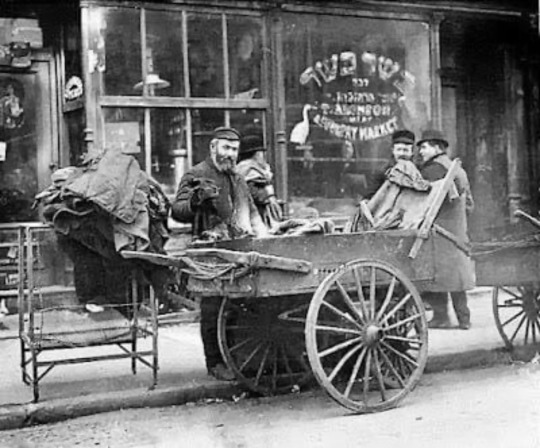
#irish#Irish antisemitism#antisemitism#israel#secular-jew#jewish#judaism#israeli#jerusalem#diaspora#secular jew#secularjew#islam#corned beef and cabbage#corned beef#cabbage#jewish history#lower East side#cuisine#food#Irish food#Irish cuisine#st patricks day#st pattys day
106 notes
·
View notes
Text
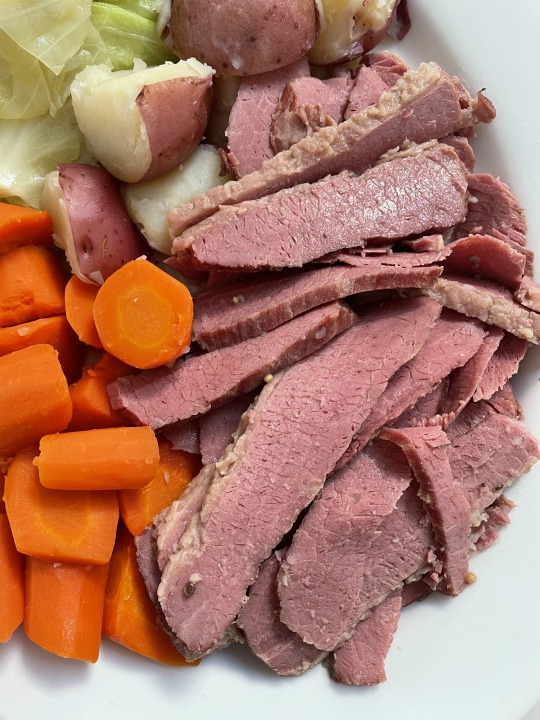

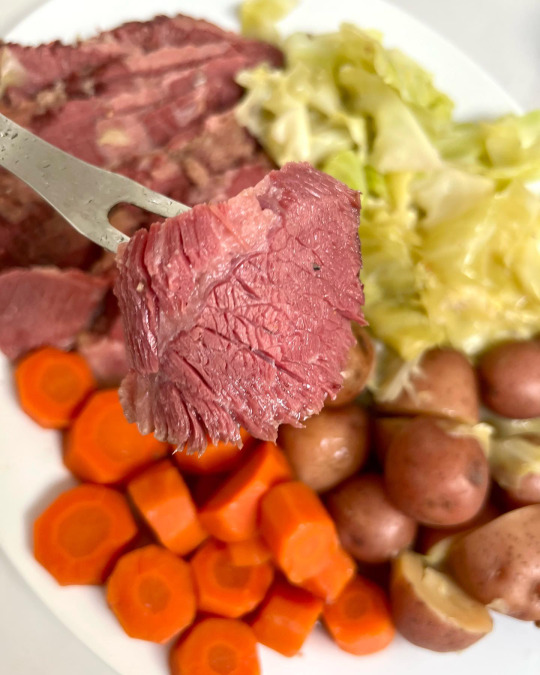
🍀Corned Beef & Cabbage Recipe for St. Patrick’s Day!🍀
#corned beef and cabbage#corned beef#beef brisket#st patricks day treats#happy st patricks day#st patricks day#saint patricks day#irish food#cooking#one pot meal#sikfan kitchen#food pics#food#foodies#recipes#food blog
18 notes
·
View notes
Text

Corned beef and cabbage for St. Patrick's day 💚 😋 it turned out very well!! Oops...I forgot to add the delicious juices to the plate before I took the picture. Silly me 🤗
#st. Patrick's day#corned beef#corned beef and cabbage#happiness#love#cooking#celebrate#sharing#mmmmmmmm
15 notes
·
View notes
Text
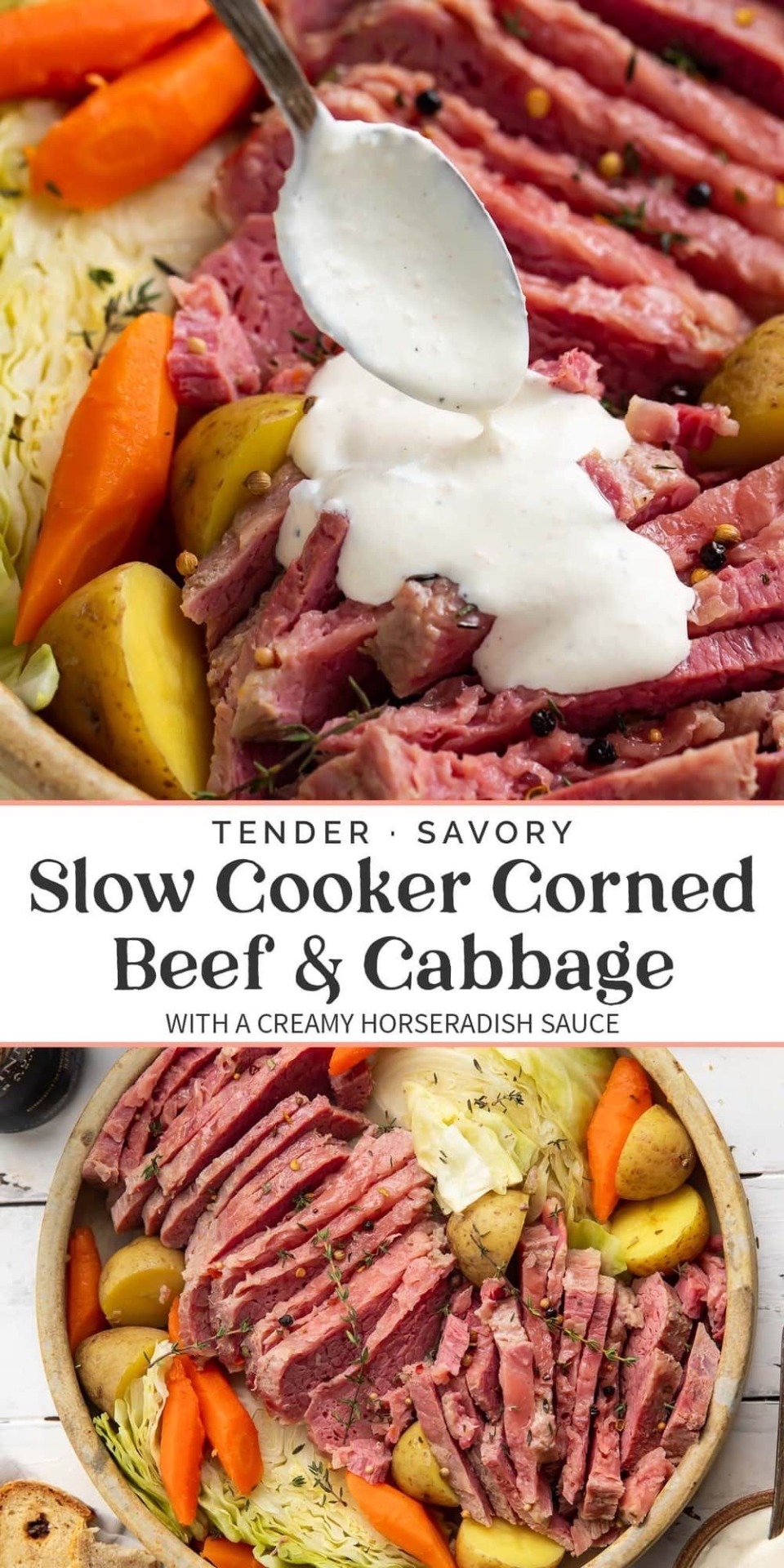
#crock pot recipes#slow cooker#slow cooker recipes#crockpot recipes#corned beef#st. patricks day#corned beef and cabbage
9 notes
·
View notes
Text

Corned Beef and Cabbage Boiled Dinner with Colcannon
7 notes
·
View notes
Text
9 Surprising Facts About St. Patrick’s Day
Who Was the Real St. Patrick? Was That Legend About the Snakes True? And Why Did So Many St. Patrick's Day Traditions Start in America?
— By History .Com Editors | March 7, 2024

Photograph By Anna Usova/Getty Images
While St. Patrick’s Day is now associated with wearing green, parades (when they're not canceled) and beer, the holiday is grounded in history that dates back more than 1,500 years. The earliest known celebrations were held in the 17th century on March 17, marking the anniversary of the death of St. Patrick in the 5th century. Learn more about the holiday’s history and how it evolved into the event it is today.
1. The Real St. Patrick Was Born in Britain
Much of what is known about St. Patrick's life has been interwoven with folklore and legend. Historians generally believe that St. Patrick, the patron saint of Ireland, was born in Britain (not Ireland) near the end of the 4th century. At age 16 he was kidnapped by Irish raiders and sold as a slave to a Celtic priest in the area now known as Northern Ireland. After toiling for six years as a shepherd, he escaped back to Britain. He eventually returned to Ireland as a Christian missionary.
2. St. Patrick Was Never Canonized
Despite his status as a patron saint, St. Patrick was never actually canonized by the Church during his lifetime. This was primarily because such a process did not exist when he died in A.D. 461. It wasn’t until 993 that St. Ulrich of Augsburg became the first saint to be formally canonized, and it was not until the 12th century that the Church established an official canonization process overseen by the Pope. While St. Patrick has not been formally canonized, many consider him to hold saintly status.
3. There Were No Snakes Around for St. Patrick to Banish from Ireland
Among the legends associated with St. Patrick is that he stood atop an Irish hillside and banished snakes from Ireland—prompting all serpents to slither away into the sea. In fact, research suggests snakes never occupied the Emerald Isle in the first place. There are no signs of snakes in the country’s fossil record. And water has surrounded Ireland since the last glacial period. Before that, the region was covered in ice and would have been too cold for the reptiles.
4. Leprechauns Are Likely Based on Celtic Fairies
The red-haired, green-clothed Leprechaun is commonly associated with St. Patrick’s Day. The original Irish name for these figures of folklore is “lobaircin,” meaning “small-bodied fellow.” Belief in leprechauns likely stems from Celtic belief in fairies— tiny men and women who could use their magical powers to serve good or evil. In Celtic folktales, leprechauns were cranky souls, responsible for mending the shoes of the other fairies.
5. The Shamrock Was Considered a Sacred Plant
The shamrock, a three-leaf clover, has been associated with Ireland for centuries. It was called the “seamroy” by the Celts and was considered a sacred plant that symbolized the arrival of spring. According to legend, St. Patrick used the plant as a visual guide when explaining the Holy Trinity. By the 17th century, the shamrock had become a symbol of emerging Irish nationalism.
6. Ireland’s Only Female Patron Saint, Brigid, Has Her Own Holiday
One of Ireland’s three patron saints, alongside St. Patrick and St. Columcille, St. Brigid (or Bridget) is the patron saint of Irish nuns, newborns, midwives, dairy maids and cattle. Believed to have been born in Ireland sometime around A.D. 450, Brigid was the daughter of a pagan king and an enslaved woman. She grew up to serve the church by building a church in Kildare, which was the site of a former shrine to the Celtic goddess, eponymous to her.
Said to have died in A.D. 524, Brigid's memory was kept alive by the church, which canonized her as St. Brigid. In 2023, Ireland designated February 1 a permanent public holiday in Brigid’s honor.
7. The First St. Patrick’s Day Parade Was Held in America
While people in Ireland had celebrated St. Patrick since the 1600s, the tradition of a St. Patrick’s Day parade began in America and actually predates the founding of the United States.
Records show that a St. Patrick’s Day parade was held on March 17, 1601, in a Spanish colony in what is now St. Augustine, Florida. The parade and a St. Patrick’s Day celebration a year earlier were organized by the Spanish Colony's Irish vicar Ricardo Artur. More than a century later, homesick Irish soldiers serving in the English military marched in Boston in 1737 and in New York City on March 17. Enthusiasm for the St. Patrick’s Day parades in New York City, Boston and other early American cities only grew from there. In 2020 and 2021, parades throughout the country, including in New York City and Boston, were canceled or postponed for the first time in decades due to the outbreak of the COVID-19 virus. They returned in 2022.
8. The Irish Were Once Scorned in America
While Irish Americans are now proud to showcase their heritage, the Irish were not always celebrated by fellow Americans. Beginning in 1845, a devastating potato blight caused widespread hunger throughout Ireland. While approximately 1 million perished, another 2 million abandoned their land in the largest-single population movement of the 19th century. Most of the exiles—nearly a quarter of the Irish nation—came to the shores of the United States. Once they arrived, the Irish refugees were looked down upon as disease-ridden, unskilled and a drain on welfare budgets.
9. Corned Beef and Cabbage Was an American Innovation
The meal that became a St. Patrick’s Day staple across the country—corned beef and cabbage—was an American innovation. While ham and cabbage were eaten in Ireland, corned beef offered a cheaper substitute for impoverished immigrants. Irish Americans living in the slums of lower Manhattan in the late 19th century and early 20th purchased leftover corned beef from ships returning from the tea trade in China. The Irish would boil the beef three times—the last time with cabbage—to remove some of the brine.
#History.Com#St. Patrick’s Day#Nine Surprising Facts#Patrick's Day Traditions | America 🇺🇸#The Real St. Patrick | Born in Britain 🇬🇧#St. Patrick | Never Canonized#No Snakes 🐍 | Ireland 🇮🇪#Leprechauns | Celtic Fairies 🧚 🧚♂️ 🧚♀️#Shamrock ☘️ | Sacred Plant 🌱 🪴#St. Patrick’s Day Parade | March 17 1601 | United States 🇺🇸#Corned Beef 🥩 | Cabbage 🥬 | American 🇺🇸 Innovation
3 notes
·
View notes
Text
I WISH
mr. andrew hozier byrne
A VERY PLEASANT BIRTHDAY AND ST. PATRICK'S DAY
#hozier#andrew hozier byrne#or is it byrnes?#don't @ me#happy birthday#happy st patricks day#st patricks day#irish day#irish#git yer corned beef and cabbage here son#or something
14 notes
·
View notes
Text
Yummy, corned beef, cabbage, carrots and potatoes for St. Patrick's Day, baby!!!

7 notes
·
View notes
Text
this is why i dislike whenever St. Patrick's Day comes around and everyone spreads around the fact that corned beef & cabbage isn't Irish food actually. that's because its Irish immigrant food.
The nature of the immigrant is any food they make is inauthentic, neither "authentic" food from their homeland nor "authentic" food from where they live. This is of course, not xenophobic in the slightest.
#also fuck st. patrick#but that's not the main point here#immigrant food#my family is descended from irish immigrants#on both sides#i'm half irish by heritage#we always have corned beef & cabbage on st. patrick's day#i fucking love corned beef#could take or leave the cabbage tho
29K notes
·
View notes
Text
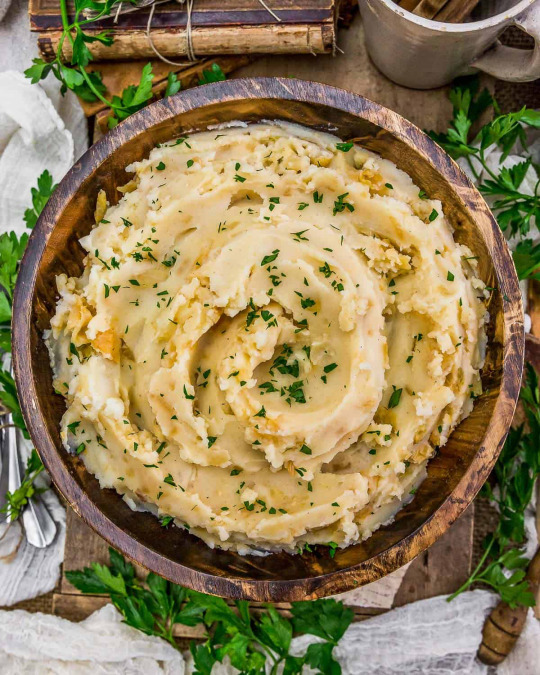
Vegan Irish Colcannon (Cabbage & Mashed Potatoes)
#vegan#appetizer#irish cuisine#st. patrick's day#mash#veganized#colcannon#mashed potatoes#potato#cabbage#garlic#onion#paprika#plant milk#apple cider vinegar#maple syrup#black pepper#sea salt
74 notes
·
View notes
Photo

Roast - Easy Corned Beef and Cabbage This corned beef and cabbage recipe is quick and easy. A no-fuss meal, that's great for St. Patrick's Day or a weeknight family dinner.
0 notes
Text

🍀 Corned Beef & Cabbage RECIPE for St. Patrick’s Day! 🍀
#corned beef#cabbage#corned beef and cabbage#irish american food#food#cooking#homecooking#youtube#recipes#brisket#saint patricks day#st patricks day#happy st patricks day
17 notes
·
View notes
Text
It could also be because it's the only acceptable time to recognise and connect with where we came from
“Why do Americans celebrate St. Patrick’s Day like that?” “Why do Americans celebrate Cinco de Mayo like that, we don’t even celebrate it in Mexico?” IT IS AN EXCUSE TO GET DRUNK AND EAT FOOD. Every popular American holiday is an excuse to get drunk and eat food. Labor Day. Veterans Day. Memorial Day. Halloween. Valentines Day. Fuck it, Leif Erikson Day. My family celebrates Guy Fawkes Day, for some reason.
#not being allowed our cultures when we move to the US#this year we actually celebrated st patrick's dsy which we don't usually do#we made corned beef and cabbage#bc it means a lot for my gma (who is more than half irish)#far as i'm aware it's the only time besides new year's where there's anything irish to be had for her#(new year's bc it's an irish (or at least my irish family's) tradition to put food and money out on new year's)#alcohol tw
4K notes
·
View notes